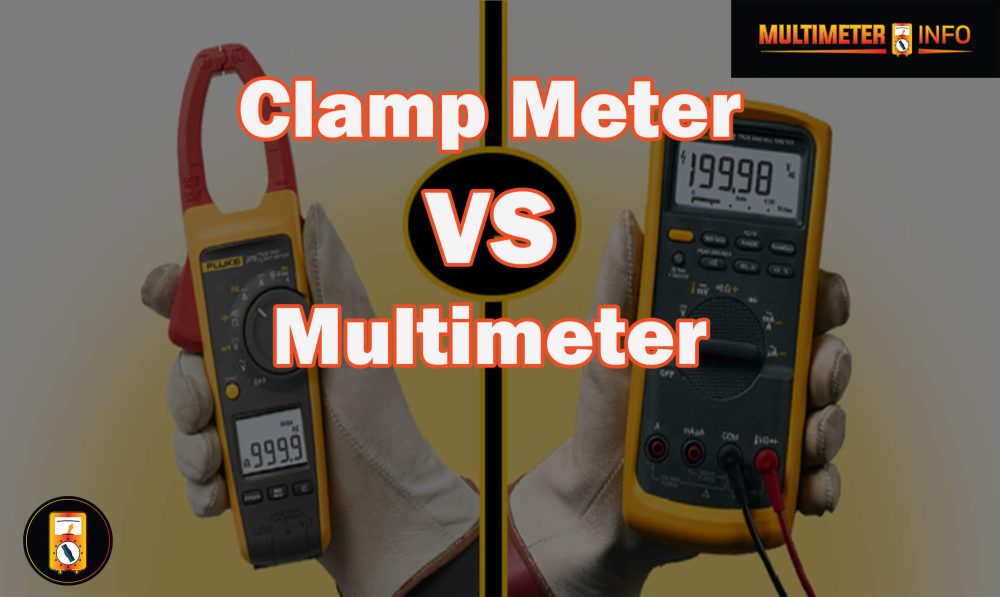Do you need to know how to use a multimeter to check 240 volts? While it is dangerous work, the job must be completed correctly. When conducting high-voltage tests, you can ensure safe measurements by taking the proper precautions and understanding the process. In this blog post, we’ll discuss the dangers of measuring electricity before walking you through a simple step-by-step procedure for testing 240 volts with a multimeter. Continue reading to learn more!
What is a Voltage?
Voltage, also known as electric potential difference, is the measure of electrical energy between two points. It is measured in units of volts and can take on positive or negative values. When a voltage is present between two points, it creates an electric field that can cause current to flow through a conductor connecting the two points.
For current to flow, there must be a difference in potential between the two points.
The larger this difference in potential, the greater the voltage will be between these locations and therefore the more current that will flow. Voltage can be found naturally occurring in batteries or generated artificially using an electrical generator. Generally speaking, higher voltages generate greater amounts of power while also posing increased safety risks due to their high levels of current. This is why it is important to understand voltage and the principles behind it when dealing with electrical devices or equipment.
In short, Voltage is a measure of the electric potential difference between two points, usually expressed in volts. For current to flow from one point to another, there needs to be a voltage present between those locations. The greater the voltage, the more current will flow, which can be harnessed to create power in certain devices. It’s important to understand how voltage works to ensure safety when working with electricity.

Tips for checking 240 voltages safely:
- Start by wearing appropriate protective gear, including insulated gloves, safety glasses, and non-conductive shoes.
- Select a Digital Multimeter that is capable of measuring AC voltage and choose the proper setting for the 240V range.
- Check to ensure that each wire is properly labeled before proceeding with any tests using the multimeter; confusion in wiring can lead to dangerous results or incorrect readings if not done correctly.
- Connect one lead from the multimeter to each wire in the circuit – if you have a three-wire circuit, be sure to connect both leads to the two hot wires and one ground wire.
- Always pay attention when attempting to measure a 240V circuit as any stray current can cause electrical shock or fire hazards if not properly contained by insulation or ground fault circuitry.
- Set the multimeter on its highest AC voltage range for the most precise reading, and observe the display for your results.
- If you have any doubts about your safety procedure during this process, contact a licensed electrician for assistance and advice before proceeding with further tests.
- When finished, turn off all power sources before disconnecting the leads from their terminals and store all equipment safely in an insulated container away from other conductive materials such as tools and wires.
- Finally, always double-check all readings to ensure they are accurate before proceeding with any other tasks related to the circuit being tested. Following these steps will help you safely check 240 voltages using a multimeter and avoid unnecessary risks when dealing with electrical equipment.
Ultimately, safety should be the top priority when dealing with electrical equipment. Following these tips for checking 240 voltages with a multimeter will help you stay safe and avoid any potential dangers that could arise from incorrect readings. Taking the time to properly research and understand how to use a multimeter before starting your project is always recommended; it could save you time and money in the long run!
How to check for 240 voltage with a multimeter?
1. Testing Tools For 240 Voltage:
Testing 240-volt circuits with a digital multimeter is a relatively simple task, but it’s important to take safety precautions when doing so. Before you begin testing the circuit, make sure you are wearing rubber-insulated gloves.
2. How to Recognize a 240V Plug or Outlet:
Before testing for voltage, make sure to identify the 240V plug or outlet. This can be done by looking at any labels on the device and referring to country-specific wiring diagrams. As a general rule, 240V outlets have three slots that are either aligned vertically or horizontally. To identify the correct outlet, check for specific labeling such as “240V” or “L-N-E.” This means the L (hot) and N (neutral) lines carry 120 volts each with the E (ground) line at 0 volts.
3. How to test 240v wiring:
To check for 240 volts with a digital multimeter, make sure your meter is set to measure alternating current voltage. Depending on the model of your digital multimeter, set the dial to “V” or “ACV”:
- Make sure the power is off to the device you are testing and unplug it from any sockets.
- Connect your digital multimeter’s test leads to the device that needs to be tested, making sure they are firmly attached, but not touching each other.
- Power on the plug, and turn on the digital multimeter by pressing its “ON” button.
- Select either “V” or “ACV” depending on the model, and set it to 240 volts.
- Once your settings are made, press the Hold/Test button on your meter, which will measure and display a voltage reading in volts AC (alternating current).
- Compare the reading with the expected value, which should be 240 Volts AC for a standard electrical device in most countries.
- If the voltage is within 10% of the expected value (216 – 264), it is considered correct and there is no need to take any further action. However, if it reads too low or too high, you should investigate further as this could indicate an issue with the wiring of your device or power source.
- Once you have taken your readings, make sure to turn off your digital multimeter and disconnect the test leads from your device before powering on again.
By following these steps, you can easily check whether a given electrical device is operating at its rated voltage. This is important to ensure that your device is working properly and safely, as incorrect voltage may lead to damage or even fire hazards. If you have any doubts about the accuracy of your readings, it’s best to contact a qualified electrician for further advice.
Common mistakes when using a Digital multimeter:
Parking leads incorrectly:
Before you start your multimeter test, make sure to park the leads in the correct plug positions. This will help prevent poor connections and false readings.
Not selecting the right range:
If you select a low-range setting while measuring high voltages, it can cause serious damage to the meter and even cause injury. Be sure to select an appropriate range before each test.
Failing to protect against transients:
Transients are short-term voltage spikes that can easily blow out sensitive components of your digital multimeter and result in inaccurate measurements or total failure of your device. Make sure you have adequate protection against these transient surges for accurate results every time.
Not using the right probes:
Probes are an essential part of multimeter testing and must be correctly matched to the desired measurement range. Using a probe with lower resistance than what is needed can lead to erroneous readings or even cause permanent damage to your device.
Incorrectly inserting leads into a circuit:
You should insert your test leads at 90-degree angles, directly in line with the conductor you’re testing. Inserting them at any other angle may result in false readings due to magnetic fields generated by the current flowing through the wire.
Not zeroing out before each test:
When taking multiple measurements, you should always make sure to zero out your digital meter after each reading. This will ensure that residual current from the previous test does not influence the subsequent measurements.
Setting the wrong function:
Digital multimeters have several different measuring functions like AC/DC voltage, resistance, and capacitance. Make sure you select the right one for your test or else you’ll get inaccurate readings.
Not checking insulation first:
Before taking any electrical measurements with a handheld digital multimeter, always check the insulation on both leads to make sure they are in good condition. If they’re cracked or worn out, replace them immediately before using them again.
Ignoring measurement limits:
Always refer to your device’s user manual to determine what type of voltage and current it’s able to measure. Trying to measure the device’s limits could cause damage or even injury.
Not using safety equipment:
To protect yourself from electric shock, you should always wear the proper protective gear such as insulated gloves and non-sparking shoes when taking electrical measurements with your digital multimeter. Additionally, ensure that your workspace is free of any combustible materials before starting a test.
Following these tips will help you avoid common mistakes and safely get accurate readings from your digital multimeter every time!
Frequently Asked Questions:
When checking for 240 volts with a multimeter, you must use an appropriate digital multimeter. It is best to look for one that can measure AC voltage up to 600V and DC voltage up to 1000V. Make sure your multimeter has an Auto-Ranging function, which allows you to select a range automatically rather than manually changing between ranges every time you check. This will make the process much easier and more accurate.
If everything is connected properly, you should receive a reading of approximately 230-250 volts. This range is considered normal and indicates that there is no issue with your electrical source. If you receive a low or high reading outside this range, it may indicate an underlying issue such as faulty wiring or insufficient voltage supply. It would be best to seek professional advice in this case.
Include wearing protective clothing, such as insulated gloves and safety goggles. Make sure to turn off the power before attempting to check the voltage. Use a multimeter to measure the electrical current and make sure it is not higher than 240 volts. If you have any doubts, seek professional help from an electrician. It is always best to err on the side of caution when dealing with electricity, so take all necessary steps to ensure your safety.
Conclusion:
Always ensure your safety when working with electricity and keep in mind all of the necessary precautions; never do anything that may put yourself or others at risk. Be sure to read your manual carefully before operating any device and test your work regularly for accuracy. If ever in doubt, contact an electrician for advice or help. Working with electricity should always be done with caution.





